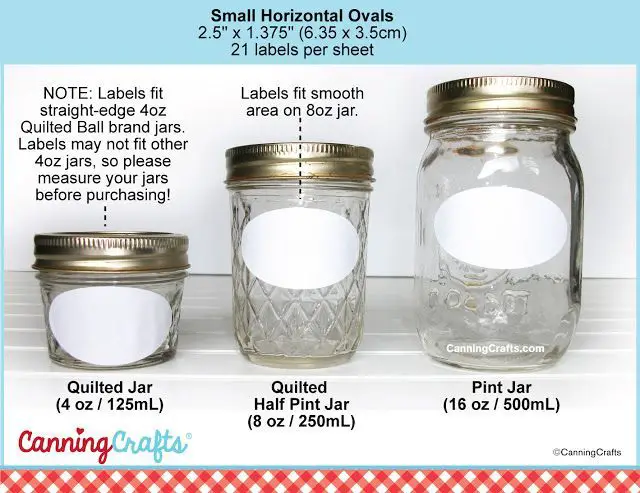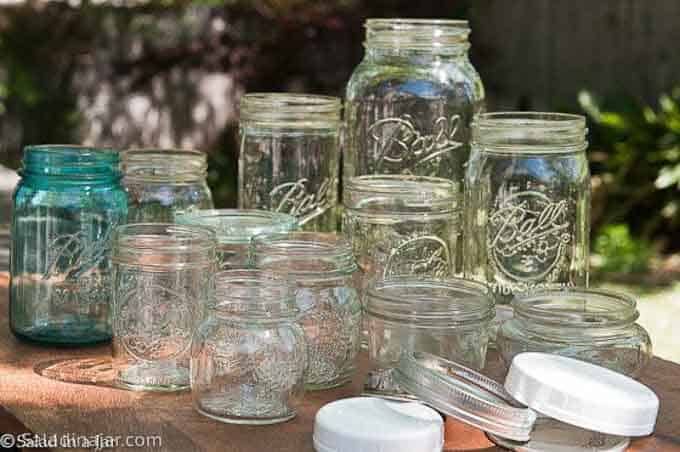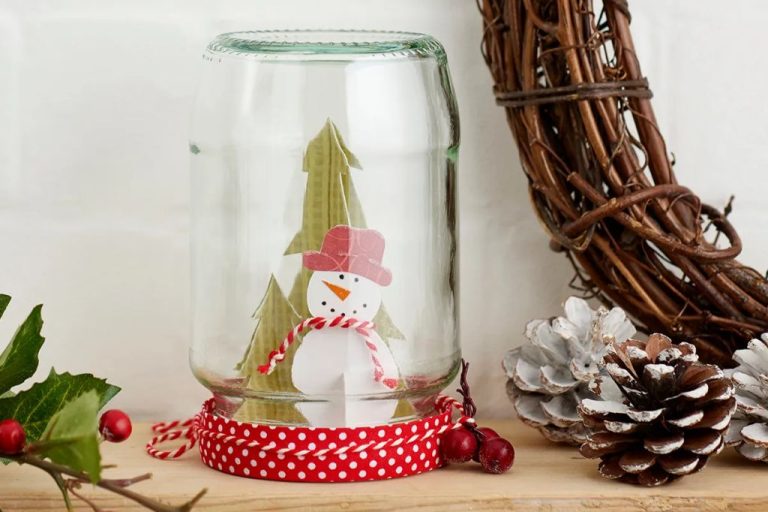What Are Mason Jar Lids Called?
Mason jars are a type of jar used for canning and preserving food. The jars were invented and patented by John Landis Mason in 1858 [1]. Mason jars are made of glass and consist of a jar/container, a metal screw-on lid, and a metal sealing ring. The glass jars come in a variety of sizes and the two main types of jar mouths are regular mouth and wide mouth. Mason jars revolutionized food preservation in the 1850s by creating a safe and reusable way to can vegetables, fruits, jams, sauces and more. Today, mason jars remain a popular choice for home canning and are also commonly used for craft projects, drinking glasses and general storage.
Mason Jar Lid Parts
Mason jars use a two-piece lid system to seal in food and keep it fresh. The main components are:
- Ring – Also called the “band”, this is the threaded metal ring that screws onto the jar. It holds the flat lid in place during canning or storage.
- Flat lid – This is the round metal disc that sits on top of the jar opening. It has a rubberized flange seal on the underside that creates an airtight seal when compressed.
- Rubberized flange seal – The rubberized compound on the underside of the flat lid that flexes to fill any small gaps, allowing air tight closure.
When used for canning, the band compresses the flat lid and rubberized seal onto the jar rim to seal in food. The band can then be removed for storage while the flat lid remains secured.
For dry good storage, both band and flat lid are used together to secure the contents. The rubberized seal still provides an air tight closure to keep food fresh (Source: https://themarketatdelval.com/how-to-store-food-in-mason-jars-to-keep-it-fresh/).

Regular Mouth vs Wide Mouth
Mason jars come in two main mouth styles – regular mouth and wide mouth. The main difference between regular mouth and wide mouth mason jars is the diameter of the jar opening. According to Wide Mouth vs. Regular Mouth Mason Jars – The Same, But Different, regular mouth jars have a 2.25 inch opening diameter, while wide mouth jars have a 3 inch opening diameter.
This difference in opening size means the jar lids are different sizes as well. Regular mouth lids are 2.25 inches in diameter to fit the regular mouth jars. Wide mouth lids are 3 inches in diameter to fit the wide mouth jars. The different lid sizes allow for different uses – wide mouth jars are easier for filling with larger items or removing contents, while regular mouth jars work well for liquids.
According to Regular vs Wide-Mouth Canning Jars, wide mouth jars can be safely stacked on top of each other, while regular mouth jars nest nicely due to their tapered shape. So the lid size also impacts how the jars can be stored.
Metal Lids
The most common type of mason jar lid is made of metal. These lids consist of two separate pieces – a flat round disk that sits inside the lid and a metal ring that screws onto the jar.
The flat round disk is usually made of tin-plated steel and has a rubberized seal on the underside. This creates an airtight seal when used in canning. The metal ring screws onto the jar over the flat lid to hold it in place.
Metal lids are reusable and rust-resistant as long as the rubber seal is in good condition. They can last for many uses if cared for properly. However, the rubber seal will eventually wear out over time with repeated canning, at which point the lid should be replaced.
Most metal lids are designed for either regular mouth or wide mouth mason jars. The diameter of the lid must match the opening of the jar. Common sizes are 70mm for regular mouth jars and 85mm for wide mouth. Metal lids are widely available from canning supply stores, grocery stores, and online retailers like Amazon.
Glass Lids
Vintage glass lids are highly collectible for Mason jar enthusiasts. From the late 1800s to the early 1900s, many Mason jars had glass lids rather than metal. These lids were either flat disks or dome shaped, made to create a seal on the Mason jar’s opening. Some earlier glass lids had rubber rings to help create the seal.
Antique stores are the best places to find vintage glass Mason jar lids. Online auction sites like eBay also frequently have listings for vintage glass lids. Mason jar collectors seek out rare colors and designs for their lid collections. For example, some colored glass lids like cobalt blue or milk glass are more valuable than clear glass lids.
Reproductions of vintage glass Mason jar lids are also available from some jar accessory retailers. These allow collectors to pair antique glass jars with period-appropriate new old stock lids. However, the vintage glass lids are still the most prized for serious Mason jar collectors.
Plastic Lids
Plastic lids are a popular disposable option for mason jars. Many plastic lids are made from BPA-free plastic for safety. Plastic lids can come in a variety of colors and sizes to fit regular or wide mouth mason jars. Some benefits of plastic lids include:
- Inexpensive – Plastic lids are an affordable option, often sold in bulk.
- Lightweight – Plastic weighs less than metal or glass options.
- Disposable – Plastic lids can be discarded after use.
- BPA-free – Many plastic lids are made from BPA-free food-grade plastic.
- Variety – Plastic lids come in different colors and patterns.
Popular brands for plastic mason jar lids include Ball and Kerr. Plastic lids provide a versatile, convenient option for preserving and storing foods. They can be purchased at many retailers that sell mason jar products, such as Amazon and Walmart.
Unique Lid Styles
Mason jars come with standard metal screw-on lids, but there are also some unique lid options that give the jars a different look or provide extra functionality.
Decorative lids come in various colors and patterns, allowing you to customize the look of your jars. These lids screw on just like regular ones, but add a pop of color or design.
Flip-top lids operate like the cap on a soda bottle, where you flip up a lever to open the jar. These allow for easy access without unscrewing a lid every time. The rubber gasket provides an airtight seal when closed.
Swing-top lids have a metal clamp that flips up, allowing the glass lid underneath to swing open. They provide a vintage look and are commonly used for drink dispensers. The rubber gasket forms a tight seal when clamped back down.
So whether you want a unique look or added functionality, decorative, flip-top, and swing-top lids provide alternatives to standard mason jar lids.
How to Use Mason Jar Lids
Mason jars and their lids are most popularly used for home canning and food preservation. The metal lid creates an airtight seal that allows food to be safely preserved. To use mason jars for canning:
1. Sterilize the jars and lids by submerging them in boiling water for 10-15 minutes. This kills any bacteria present.
2. Fill the sterilized jars with your prepared food, leaving 1/2 inch of headspace at the top.
3. Wipe the rim of the jar clean before placing the flat metal lid on top. Secure with a mason jar ring and tighten.
4. Process the filled jars by boiling them in a water bath canner or pressure canner. Refer to canning guidelines for proper processing times.
5. After processing, allow the jars to seal and cool completely before removing the rings. Test the seal by pressing on the lid – it should not flex up and down.
Once properly sealed, mason jars can be stored for up to a year. They are ideal for preserving fruits, vegetables, jams, salsas, and more. The airtight seal also makes mason jars good for storing dry goods like flour, sugar, coffee, etc.
Mason jar lids can also be used to freeze foods like soups, stocks, and salsa. Leave headspace, secure with a lid and ring, and freeze. The lid and ring can be removed once the contents are fully frozen.
For storage, the metal lid creates an airtight seal to keep contents fresh. Wipe rims clean before securing lids for best results.
Source: https://whiskanddine.com/mason-jar-lids-baking-hack-with-video/
Where to Buy
Mason jar lids can be purchased from a variety of stores, both online and in-person. Some of the most popular places to buy mason jar lids include:
- Online retailers like Amazon, Walmart, Target, and specialty canning sites like Fillmore Container. Online stores will have the largest selection of lid types, sizes, and quantities for convenient shipping.
- Grocery stores often stock mason jars and lids in the canning or kitchenware aisle. Look for brands like Ball and Kerr at stores like Walmart, Kroger, Safeway, etc.
- Hardware stores like Ace Hardware, True Value, and Lowe’s typically carry mason jars and accessories in the kitchen and home storage section.
- Big box stores like Walmart, Target, and Meijer have mason jars and lids in the home goods area. Check both the kitchenware and outdoor/camping sections.
- Craft stores like Michaels, Joann’s, and Hobby Lobby sell mason jars and lids, often in multipacks.
When buying lids, opt for new, unused lids rather than old ones from previously opened jars. New lids form the best seal for safe canning. Also note that regular mouth and wide mouth lids are not interchangeable.
Conclusion
In conclusion, the proper lid is a crucial component of mason jars to ensure a tight seal for preserving foods. The lid types include metal screw bands, glass, plastic, and unique specialty options. While the lid styles have evolved over the years, the sealing performance remains critical.
Proper sealing prevents air exposure and bacteria to keep foods fresh for extended storage. It also prevents spills and leaks. Using the right lid type for the mason jar mouth size, whether regular mouth or wide mouth, is essential.
Following manufacturer guidelines for prep, use, and care helps maintain lid integrity. Choosing lids of good quality from reputable sources also ensures best sealing results.





